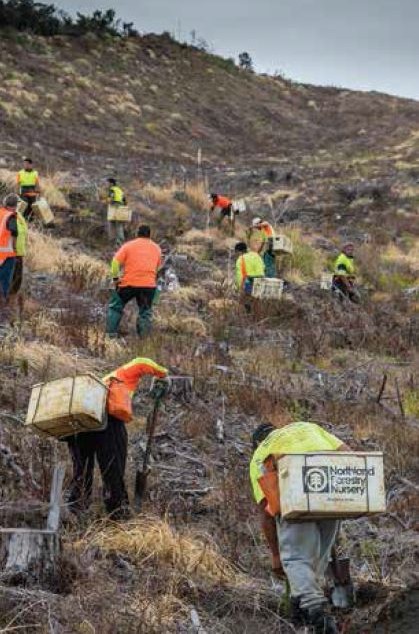New spatial models could add $1.7 billion in net value to forests
Growing unpruned structural grade timber is the silvicultural regime of choice in half of New Zealand’s forests. According to research, most of that forest estate’s final stocking rate is below the optimal stand density.
Nationwide, there is approximately $1.7 billion in net value to be gained from optimising final stocking. Scion is helping to realise this value by developing a set of simple models that can be used by most of New Zealand’s structural grade forest growers.
“If proven to be successful, this will be a substantial step in the direction of precision forestry and the optimisation of the growing capacity of our sites.” - Aaron Gunn, Technical and Resources Manager, Port Blakely
Scion scientists used the productivity indices Site Index (SI) and 300 Index (I300), and rotation length, harvest costs and log value, to develop a model that predicts the optimum final stand density (Sopt) for a standard structural grade regime. Using this model they have been able to produce a map of Sopt covering the whole country.
The average predicted Sopt for growing structural grade logs across New Zealand was found to be over 700 stems per hectare. The current final stand density for structural grade regimes averages around 500 stems per hectare, so there is definite scope for increasing the volume of high-value log products.
Research Leader Dr Michael Watt explains, “This research is applicable to structural regime forest growers all around the country. Already, we’ve had widespread interest from forestry companies and consultants who want to use the model to spatially predict the optimum final crop stocking within their estates.”
One such forest manager is Aaron Gunn, Technical and Resources Manager at Port Blakely. He says, “As a direct result of this research, we are currently evaluating the potential for using high resolution LiDAR derived SI and I300 layers to define optimal final crop stockings for structural grade regimes at one forest site. If proven to be successful, this will be a substantial step in the direction of precision forestry and the optimisation of the growing capacity of our sites.”
The model will be released later in 2018 by Forest Growers Research. Further work is already underway to extend the modelling approach to optimise final crop stocking for clearwood regimes that have a lower Sopt than structural regimes. Work is also in progress that will allow forest managers to compare the value of clearwood and structural grade regimes at the site level.
Investment: Growing Confidence in Forestry’s Future, Ministry of Business, Innovation and Employment, Forest Growers Levy Trust
Links: https://bit.ly/2J8vy1h; https://bit.ly/2zoqshX

